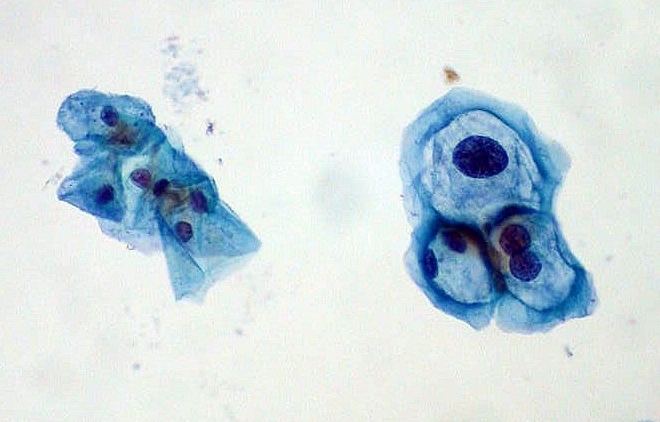 | ||
A Koilocyte is a squamous epithelial cell that has undergone a number of structural changes, which occur as a result of infection of the cell by human papillomavirus.
Koilocytosis or koilocytic atypia or koilocytotic atypia are terms used in histology and cytology to describe the presence of koilocytes in a specimen.
Koilocytes may have the following cellular changes:
Collectively, these types of changes are called a cytopathic effect; various types of cytopathic effect can be seen in many different cell types infected by many different types of virus.
When examining cytologic specimens, mild koilocytosis is characteristic of ASC-US (atypical squamous cells - undetermined significance). A more undifferentiated koilocyte, possessing a more hyperchromatic and enlarged nucleus, and a higher degree of cytoplasmic clearing with a discernible peripheral rim favor an interpretation of LSIL (low-grade squamous intraepithelial lesion).
Koilocytes may be found in potentially precancerous cervical, oral and anal lesions.
Interpretation
These changes occur in the presence of human papillomavirus and occasionally can lead to cervical intraepithelial neoplasia, and if left untreated some may eventually progress to malignant cancer.
